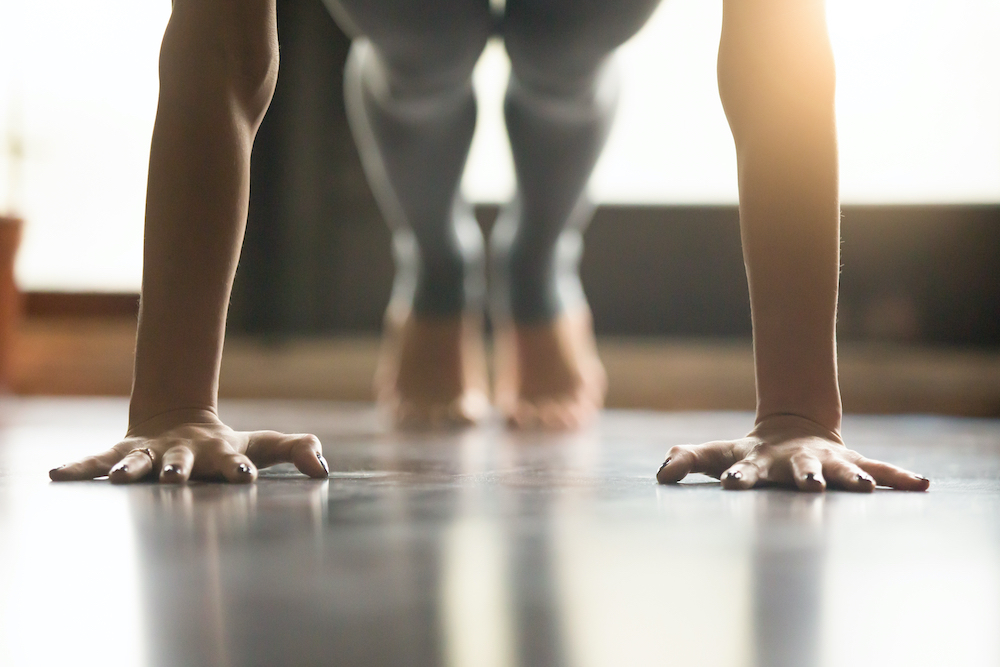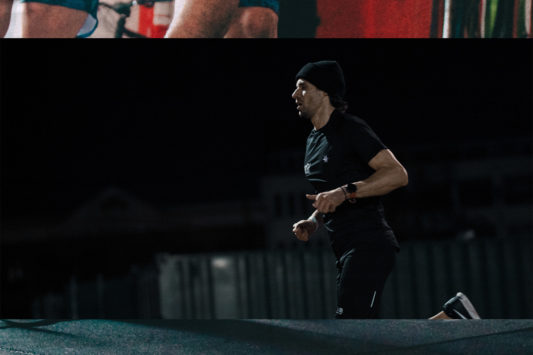The core is often a neglected part of any frequent gym attendees training programme. Even if the importance of core training is well beyond that of a chest and bicep session. A detailed description of the muscular make-up of the core is way beyond the scope of this article, however it is clear that core strength is fundamental when training.
With any active endeavour a strong core is essential, whether you are playing sport or training in the gym – a weak core is inevitably going to delay your progress and potentially lead to injury.
This is because the core is our bodies’ connection between the lower and upper extremities, it bridges the body together and all motions are generated from the core. You should view your core as more than just your abdominal muscles; it’s the driving force of your body. With that in mind, here are three further reasons to keep your core firing on all cylinders.
PREVENT INJURIES.
Improving function and coordination of the core is an important factor in injury prevention, especially when it comes to reducing any potential injury of the lower back. The core muscles control the pelvis and poor strength in this area can contribute to lumbar spine injuries. Back pain is a common side effect of having a weak core. When the core isn’t strong or balanced, the lumbar spine can change shape. If this occurs then the likelihood of getting injured increases, any slight deviation in the structure of the lumbar can lead to serious problems.
STRONG CORE, STRONG POSTURE.
A strong core will ensure you have a strong posture, the muscles of the core and lower back help keep your upper back and shoulders neutral. A weak posture is often an indication of a weakness within the muscles of the core. These muscles, when they lack strength, can cause a person to become slumped. Opting to slouch can lead to a bulging midsection and an excessive lower back curvature.
CHAMPION ABS.
Not only will a strong, powerful core protect you from injury, it will also help you achieve a great looking stomach. First develop the inner strength of the core, the less superficial abdominal muscles need to be developed first before deciding to train the six-pack. If you overdevelop the rectus abdominis, the muscle that gives you the six pack appearance, you are likely to end up with an even more protruding belly and a weak lower back.
Therefore, train the strength of the deep core muscles first through the exercises listed below; once you have begun developing those muscles then you can chisel yourself a six-pack to be proud of.
EXERCISES TO STRENGTHEN THE CORE
Core training is more than just doing endless amounts of crunches and spending time sitting bouncing around on a swiss ball. A strong core is one that can remain stiff and contract with maximum force, repeatedly. Outlined below are my three favourite core exercises that will help elicit a strong, stiff core to protect you while you workout, play sport or simply just live your life!
BARBELL ROLL OUT
The Barbell Roll Out is a great exercise and most commonly used in strength training and conditioning programmes, primarily to develop core strength. It is a pretty tough exercise and few people can immediately complete one repetition. Most people commonly start from the knee, however I believe the progression from the knees to your feet is highly unlikely. Instead you should avoid doing the roll out from the knee and rather execute from the feet, using resistance bands (see below).
Starting Position
I always recommend you begin the rollout in a press-up position with the hands slightly wider than shoulder width apart on the barbell. The head should remain neutral and the shoulders relaxed.
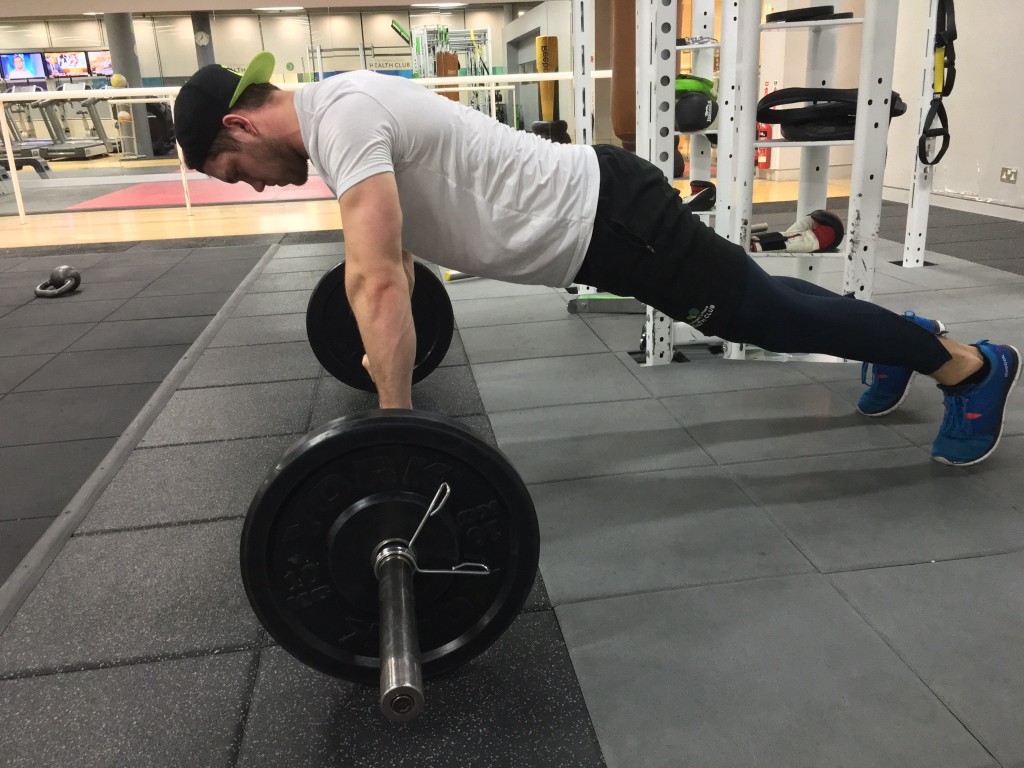
Execution
From the ready position, allow the barbell to roll out under control until you reach parallel with the ground; it is vitally important that you contract your core and activate your glutes while doing this. You should mirror the same movement on the way back up. The repetition is complete once you return to the starting position.
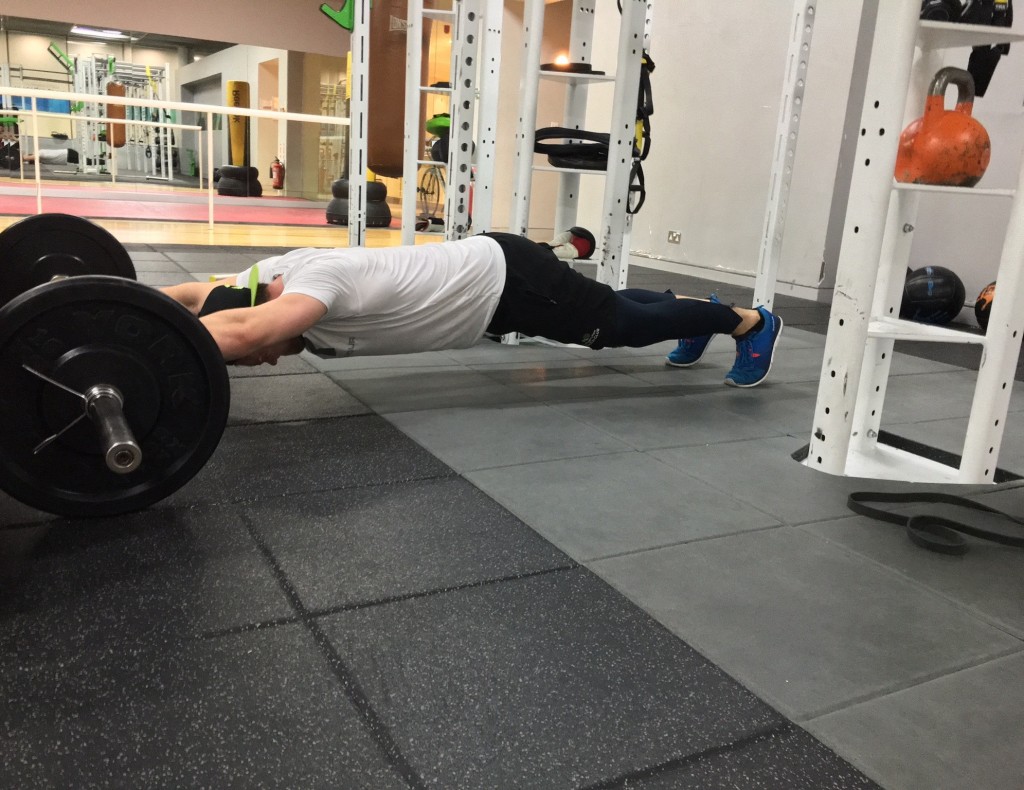
Learning
To start with this exercise can be performed using resistance bands as an assistance tool. The band should be placed on your waist and the rollout performed as mentioned earlier. The assistance can be progressively reduced, starting with a thick band and eventually getting to the point where you are able to execute a bodyweight rollout.
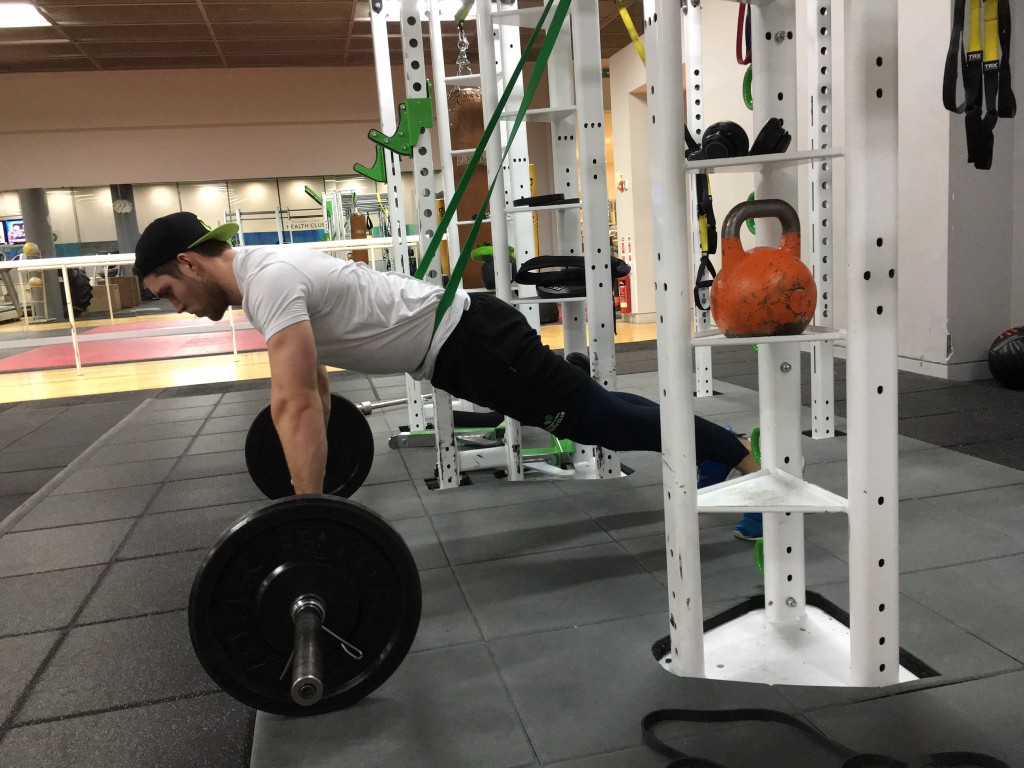
Russian Twists
The weighted Russian Twist is a core exercise that primarily targets the abdominals and obliques. This exercise is well suited for both beginner and advanced lifters due to the vast progressive and regressive options available.
Starting Position
Begin seated with your knees bent at 90 degrees, your back roughly 45-60 degrees to the floor and your feet lifted from the ground, using only your core to remain stable. Hold an appropriate weight in front of your body with your arms bent at the elbows.
Execution
While ensuring your legs remain still, rotate your upper body from side to side. Keep your core engaged throughout, remembering to breathe as you rotate. The movement is not supposed to be large and should come through the ribs and not the arms.
Learning
A basic Russian Twist would simply involve using the weight of your upper body to work your abs. If you feel the above demonstrated exercise is too difficult then simply begin with your feet on the floor and knees bent. Hold your arms out in front of you, lean back roughly 45 degrees, and then just rotate from side to side.
The obliques are vitally important when it comes to supporting the core and Russian Twists are a great exercise for exactly that. If the obliques are weak then the support of the core falls upon the abdomen and lower back, therefore use this exercise to strengthen your stomach, tighten your waist and support your lower back.
A strong core will make it easier to do pretty much everything. Weak core muscles will leave you susceptible to bad posture, lower back pain and muscle injuries. Whether you are a complete beginner or a fitness fanatic, core training must be a part of your fitness programme. It is one of the most important areas of the human anatomy and it needs to be strong!
Nutrition
Just like any muscle (or muscles) in the body, your core muscles need protein to repair and rebuild, so make sure your protein intake for the day is sufficient to aid proper recovery. A meal of salmon, chicken or tofu would be a perfect source of protein after a workout, or if you need something quick and convenient, Pure Whey Protein™ is ideal too.
About the Author
Dejan and Jonny are both fitness professionals stemming from a vast sporting background. Based in London they are the founders of ‘LetsTrain’ – an online, forward-thinking, fitness and nutrition resource.
